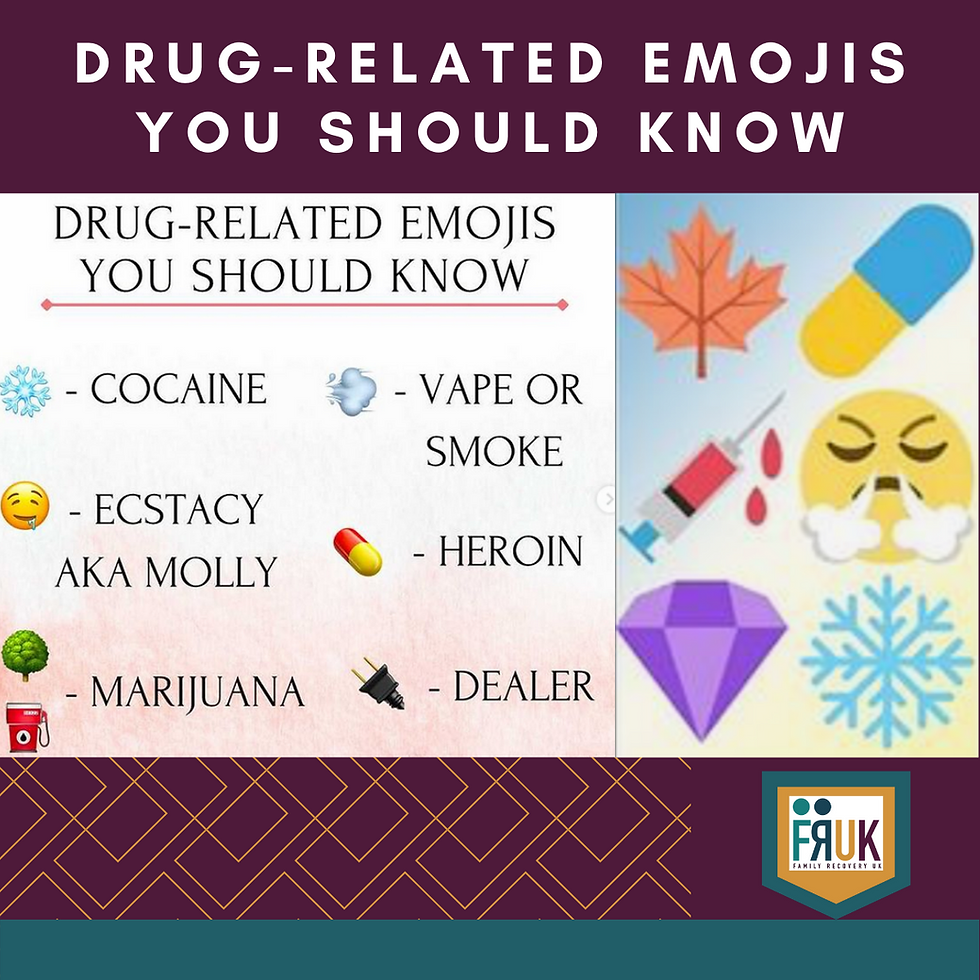How can I tell if my teen has changed from using recreationally to being chemically dependent?
- Lucy Tomkins

- Aug 12, 2021
- 3 min read
Many of the changes in behaviour listed below, can be attributed to normal changes which take place in adolescence. This makes spotting the difference between normal teenage behaviour and the cross over into addiction extremely hard. Below are some indicators to help you gauge the situation and come to your own conclusion. Remember knowledge is power especially when we are faced with addiction.
Personality change, mood swings, unpredictable behaviour
Distancing themselves from old friendship groups, now spending time with new friends who you know little or nothing about.
School performance and grades deteriorating/suffering and less interested in sport, extracurricular activities, previous interests.
Money/items disappeared from the house. Are you being asked for extra money with no explanation for needing it?
Being told that mobiles, laptops etc have been broken/stolen & need replacing.
Personal hygiene, physical appearance declined/changed
Are you hearing stories/rumours about your child’s behaviour, partying?
Are there signs of depression, loneliness, signs of paranoia, withdrawal, are they isolating themselves especially at home spending long hours in their room, not joining the family for meals?
Erratic sleep patterns, up all night, asleep all day, chronic tiredness, cravings, red eyes, dilated pupils
Are they lying to you constantly?
Have you found drug paraphernalia in their room/car/person (rolling papers/baggies/spoons/bottles/cans etc. and they tried to explain it away when confronted? Someone else’s or I have tried it once and hated it and will never do it again.
As you can see from this list, many if not all can be attributed to normal teenage behaviour – you are looking for the majority of the pieces of the puzzle. Trust your gut, you will normally just know when something is off.
Another indicator for the raised possibility of addiction is ACE’s (adverse childhood experiences) The more of these that a child experiences, the more likely they are to have a vulnerability to addiction. Gabor Mate says, “ask why the pain, rather than why the addiction?
The ACE study looks at ten common adverse experiences in the household:
Being regularly put down, humiliated, or yelled at
Being pushed, grabbed, slapped, thrown, or hit hard
Being touched, fondled, or having sexual activity with someone at least 5 years older
Feeling like they weren’t loved or important or special
Not having enough to eat, or clean clothes
Parents frequently drunk or high and unable to adequately protect them
Parents separated or divorced
Domestic violence in the home (mother or stepmother hit, grabbed, pushed)
Living with someone in the home who was a problem drinker or used street drugs
Having a mentally ill, depressed, or suicidal family member
Having a family member go to prison
Each of the above experiences, if present in a child’s life, is one point. The higher the point score, the higher the risk.
From this research, we know that almost any kind of childhood trauma increases our risk for addiction, juvenile delinquency, obesity, mental and physical health conditions. The risk increases exponentially for any of us who have experienced multiple traumas.
It is very tempting, as a parent to either stay in denial that there is a problem (to avoid our own pain) or blame ourselves when our child struggles with addiction. Maybe we worked too much when our kids were small or maybe we were short-tempered, angry, or depressed. Maybe we were overly tough on them or too easy on them. Or maybe we didn’t show enough love and affection or maybe something else.
Gabor Mate says “if you are worried about whether you screwed up your kids, don’t worry. You did.” What he means is that no parent is ever perfect. We are all at least partly a by-product of what we experienced growing up. We all do the best we can with what we have got. There is no place for blame and shame in recovery and wellbeing, and that is true for both the addict and the parent.
What we can do, is free ourselves from blame and shame, get out of denial, educate ourselves about addiction and learn how we can become part of the solution and be a positive influence in our children’s lives. In a nutshell, we can learn how to role model Family Recovery.
Here are some commonly used emojis. Knowledge is power! If we don't know, what we don't know, we cannot make good choices for ourselves or our children.



Comments